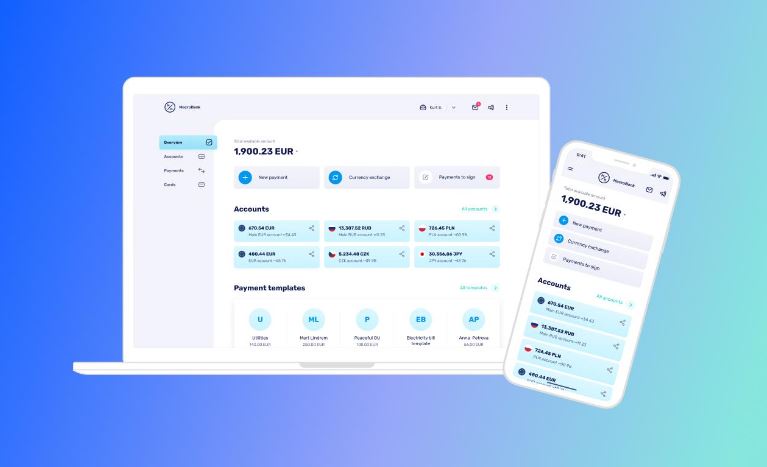The financial industry has witnessed a surge in the popularity of Banking-as-a-Service (BaaS) and agent schemes, driven by the continuous tightening of regulatory measures on e-money and payment institution licenses.
Acquiring one's own license in this space is a formidable challenge, requiring substantial resources, expertise, and significant financial investments. For those without the means to obtain a license independently, the BaaS model and agent schemes provide viable alternatives to offer payment services through licensed providers.
On the flip side, BaaS providers are equally diligent in selecting reliable agents. They meticulously vet potential collaborators during the onboarding process, aiming to mitigate risks associated with their licenses.
If you are considering becoming an agent for a licensed payment or e-money institution, it's crucial to create a checklist for evaluating BaaS providers in the market. The following comprehensive checklist is designed to guide your research and aid in the selection of a BaaS provider that aligns with your specific needs and preferences.
BaaS Provider Infrastructure Assessment
Payment Infrastructure Analysis
Analyze the BaaS provider's payment infrastructure, covering essential services like SEPA, SWIFT, multi-currency payments, currency conversion, and payment cards.
- SEPA Payments: Confirm the provider's direct SEPA access (e.g., through CENTROLINK) to avoid complications, increased costs, and additional risks.
- Cross-border Payments: For diverse currencies, inquire about SWIFT access or agreements with Money Transfer Operators for non-SWIFT options.
- Currencies: Assess the BaaS provider's supported currencies for compatibility with your needs.
- Payment Cards: Verify if the provider offers a white-label card product, available in physical/virtual formats and operating on a prepaid basis.
- IBANs: Check for separate IBANs for distinct financial purposes.
Alignment with BaaS Provider Requirements
Operational Guidelines
Evaluate the scope of allowable agent operations and those that are restricted. Some providers refrain from onboarding companies in high-risk industries such as cryptocurrency or gambling.
- Client Geography: Review the list of restricted countries defined by the provider and compare it with the geographical distribution of your client base.
- Client Industries: Determine the industries within your client base that the provider categorizes as high-risk. Understand the provider's stance on services for non-EEA/UK clients.
- Blacklists: Thoroughly assess all blacklists maintained by the BaaS provider, gaining insights into their risk tolerance and compliance requirements.
Aligning Your Customer Base with BaaS Provider’s Risk Matrix
In the comprehensive checklist for selecting a BaaS provider, evaluating the alignment between your customer base and the provider’s risk matrix stands out as a critical step. Each BaaS provider maintains a unique risk matrix that serves as a foundational tool for assessing client risk. The parameters within this matrix influence operational rules and service provisions, making it imperative to ensure compatibility with your customer base.
Failure to conduct this analysis before entering into agreements may lead to various complications. Onboarding challenges for certain customers, restrictions on specific payment types, elevated tariffs, or charges for client onboarding could arise. To preempt such issues, it is essential to ascertain that your customer base aligns seamlessly with the risk matrix parameters defined by your chosen BaaS provider.
Transparent communication is paramount in this process. Accurately depicting your clients’ profiles and associated risks is crucial. Misrepresentation could lead to altered terms or account closure, with non-refundable expenses for onboarding and integration.
Negotiating Tariffs for Personalized Solutions
Tariffs play a pivotal role in tailoring services to your clients and business model. If you have ambitious growth plans, negotiation is a valuable avenue, particularly with significant expansion. Discussing potential tariff adjustments based on increased transaction volumes can secure reduced initial tariffs from the BaaS provider.
Presenting a clear vision of volume increase is instrumental in these negotiations. BaaS providers often appreciate transparent communication and may be open to flexible tariff structures for mutually beneficial growth.
Thoroughly Addressing Operational Procedures
A comprehensive understanding of operational processes is crucial before finalizing agreements. This encompasses critical aspects such as onboarding, customer support, and claims management. During engagements with the BaaS provider, delve into inquiries regarding:
Onboarding procedures – Does it involve a pre-approval step on your end, indicating AML department involvement?
Client registration process – Clearly identifying responsible parties and outlining subsequent steps.
Responsibilities for low-risk B2C clients, typically shared with the Agent, and higher responsibility for high-risk clients falling on the BaaS provider.
Clearly defining these responsibilities aids in determining hiring needs and allows the BaaS provider to assess your team structure.
Formalizing Contracts and Navigating Onboarding
Upon agreement, BaaS providers often present a standardized contract with occasional modifications. After signing and processing the onboarding payment, the subsequent phase involves document preparation.
This includes various policies and an in-depth overview of your business model, submitted to regulators for approval. Typically, this process takes around 2 to 3 months to complete. This meticulous approach ensures a smooth onboarding process and sets the stage for a successful partnership with your chosen BaaS provider.
Choosing Your Core Banking Software Provider
Selecting a core banking software provider involves meticulous considerations. Assess the provider's API capabilities, ensuring seamless connections to third-party services.
Prioritize a comprehensive core banking system rather than relying solely on front-end applications, guaranteeing database ownership and facilitating smooth customization. Evaluate the software's readiness for potential migration to a new BaaS provider or obtaining an independent license.
Look for pre-existing integrations with BaaS providers to streamline the integration process. Opt for established platforms like Macrobank for enhanced operational security and flexibility in customizations.


No comments yet